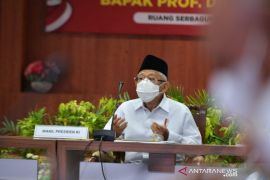The Corona Virus Disease 2019 (COVID-19) pandemic broke out in late December last year in China's Wuhan. In three months, it has spread to countries across the globe, sparking panic, with more than 600,000 persons contracting the infection worldwide.
Historically speaking, the world has witnessed several contagions before the coronavirus.
A Netflix drama series Kingdom, released in 2019, and set in Korea's Joseon era (around 1592 to 1598), begins with an ailing king, who presumably has the smallpox. As the Queen and the Chief State Counsellor sequester the king, rumors spread of his death. When the crown prince tries to meet his father, he is warned: “If you catch it from His Majesty and fall ill, who will lead the nation?”
While the series, full of political intrigue and a mysterious plague that is turning people into zombies, is based on a fictional webcomic, smallpox outbreaks have been very much a part of human history.
It remains unknown when variola — the virus that causes smallpox — first infected humans, but the World Health Organization (WHO) states the highly-contagious disease has long been "the subject of myth and superstition", since it is associated with an obvious symptom - a rash of pimples on the skin.
The mummy of Pharaoh Ramses V, which dates back to around 3,000-3,500 years ago, bore lesions on its head, which are believed to have been caused by smallpox.
While the earliest notes on smallpox were found in a 4th-century Chinese document, similar descriptions were found in later writings from India (7th century) and other regions across Asia (10th century).
Anyone could be infected with smallpox, be it a king or peasant. Therefore, a WHO document on Smallpox and its Eradication, published in 1988, states the disease "caused such dramatic and disastrous epidemics.”
"One third or more infected people died, as little could be done for them," WHO noted, while the disease usually left scars on those who survived.
For centuries, the epidemic spread all over the globe. From Asian to European countries, and later on to Africa, the Americas, Oceania.
Batavia gets over the plague
It was the 16th century when smallpox was first recognized in Indonesia — Malay Achipelago in that era — as indicated by written accounts of Portuguese and Dutch colonialists who came to the country at the time.
But, they reported the disease was endemic since it was only found over several islands.
The book of Sejarah Pemberantasan Penyakit di Indonesia (The History of Disease Eradication in Indonesia) published by the Indonesian Department of Health recorded the first smallpox case in Batavia (present-day Jakarta), the capital of the Dutch East Indies, in the year 1804.
That case was imported from the Isle de France (present-day Mauritius) through some 6 to 12 year-old slaves who were infected by variola.
"In order to contain its spread, smallpox vaccine was injected. It was initially only for bumiputera, native people of the archipelago, who mingled with Europeans," said the book.
"During late 1811 through early 1816, Lieutenant Governor Thomas Stanford Raffles, the high official, started to extend smallpox vaccination areas across Java," it added.
The vaccine itself began to be developed back in 1796 when Dr. Edward Jenner, an English physician, conducted his experiment on the inoculation process using cowpox infection.
Dr. Jenner took cowpox material from a milkmaid named Sarah Nelmes, who had contracted the virus, and inoculated it on the arm of James Phipps, a nine-year-old boy.
It worked as Phipps did not develop any smallpox symptoms after being exposed to the variola virus. He had developed antibodies to protect himself against the pox viruses.
In Java, Raffles ordered the vaccination process to be undertaken by local vaccinateurs, smallpox experts, who had learned about it in some military hospitals.
Iksaka Banu, an Indonesian writer, described a smallpox outbreak in the Dutch East Indies in a story titled Variola. The colonial-era themed, historical short story was part of a collection of stories published in Teh dan Pengkhianat (Tea and the Traitor).
In Variola, the main character questions why God created contagions, especially given how the smallpox plague had spread and infected people in the Dutch East Indies, where the people were nice, and the nature perfect.
"God should not bring the plague here," Adriaan Geest, a health official in Batavia--the main character of Variola—declares in the story.
Whether willing or not, Geest must get one job done: find ten kids to be the medium for smallpox vaccine, send them to Bali as the outbreak spreads outside the island of Java.
One of the main challengers he faces is Van Kijkscherp, a priest who rejects the idea of using kids to transfer the vaccine.
"Are you aware you are intervening in God's affair?" Van Kijkscherp tells Geest.
"The thing is we cannot challenge God's plan. If the children contract pox and survive, that reflects God's great will on his people. But if they die, that also counts as his will. Nothing we can do between these two."
Besides the controversial issues captured in Banu's fictional work on smallpox vaccinations, the vaccine development in the Dutch East Indies clearly met with progress.
The vaccine material was initially carried from Europe, while in 1879, the Indies government established Parc vaccinogene, a research center to self-produce the material.
It showed its progress in 1884 when Dr. A. Schuckink Kool succeeded in producing a smallpox vaccine in Batavia's Meester Cornelis (present-day Jatinegara).
From the history of smallpox outbreaks and the invention of its vaccine, we can know that human race is already given the ability to tackle various problems, including health problems.
If we can conquer smallpox, by God's will, we soon also conquer COVID-19.
Related news: Lessons learned from Indonesia's polio outbreak to defeat coronavirus
Related news: Key takeaways from the cholera outbreak that devastated Batavia
Editor: Yuni Arisandy Sinaga
Copyright © ANTARA 2020












